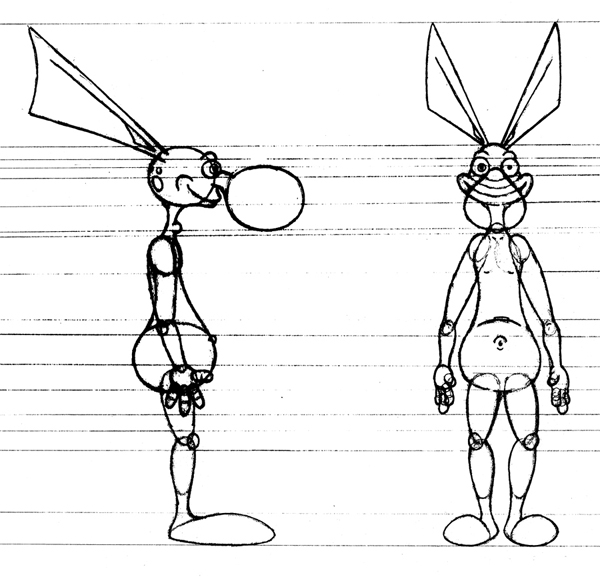07/19/2010
Illustrating Techniques of the ‘Toaster’ Part 2
I’ve been an illustrator/cartoonist ever since I could pick up a pencil and put it to paper. I’ve continually worked on my character development and constructing the vast world in which they live in. Using my vivid imagination, I’ve written complete comic books/strips, created character origins and continually developed my own cartoon style. Over the years I’ve had numerous art teachers, mentors, and artisans who’ve helped me discover and develop my own sense of cartooning. There were also numerous cartooning and animation text books I’ve utilized to further develop my own artistic style, one in particular that made a huge impact in my career was the ‘Cartoon Animation’ book by Preston Blair. Recently I’ve revisited this animation bible to refresh my skills as a cartoonist and I thought it would be a great topic to write about on my blog!
It’s pretty exciting to create and construct a cartoon character from scratch! A lot goes into this process, from making your character believable and lifelike to the personality they will portray in your comics. As an illustrator/cartoonist you’re going to need to know how to entertain your audience; from presenting the joke/gag to presenting a deeper message in your stories. You’ll also need knowledge in screen writing, plot, premise, conflicts, crisis, dialogue, and so forth in order to really create something that people will want to come back to read.
But let’s take it slow and start with character construction. It’s all about proportion, when constructing your character(s), keep in mind the relative sizes of their body parts. Specific proportions are used to create different character types. Here we have Beany Barfalamue, a very thin ‘goofy’ big eared fellow with an over-sized nose. He’s one of the main characters of my comic strips/stories, and is shown here in front & side perspective drawings. You can see the different size of ovals used to construct Beany, which is important because his nose blocks a lot of his facial expressions. However, once you understand the overall proportions of your character(s) you will be able to overcome this hurtle. Using reference drawings such as this one, you as the animator will be able to quickly refer to the proportion guidelines when drawing the character in different poses and actions.
Later we’ll look at Beany’s sidekick; Ralf and his specific proportion guidelines and how they compare to Beany Barfalamue!
ALL MATERIAL IS COPYRIGHT PROTECTED! Unless otherwise provided in writing from Designer. No person(s) may not make or permit alterations or manipulations of images beyond the requirement of slight or reasonable image enhancement (i.e. alterations of contrast, brightness, color balance, re-sizing, and cropping), consistent the reproductive needs, that do not materially change the integrity of any image. Alterations or manipulations include but are not limited to additions to, subtractions from, or adaptations, alone or with any other material.
